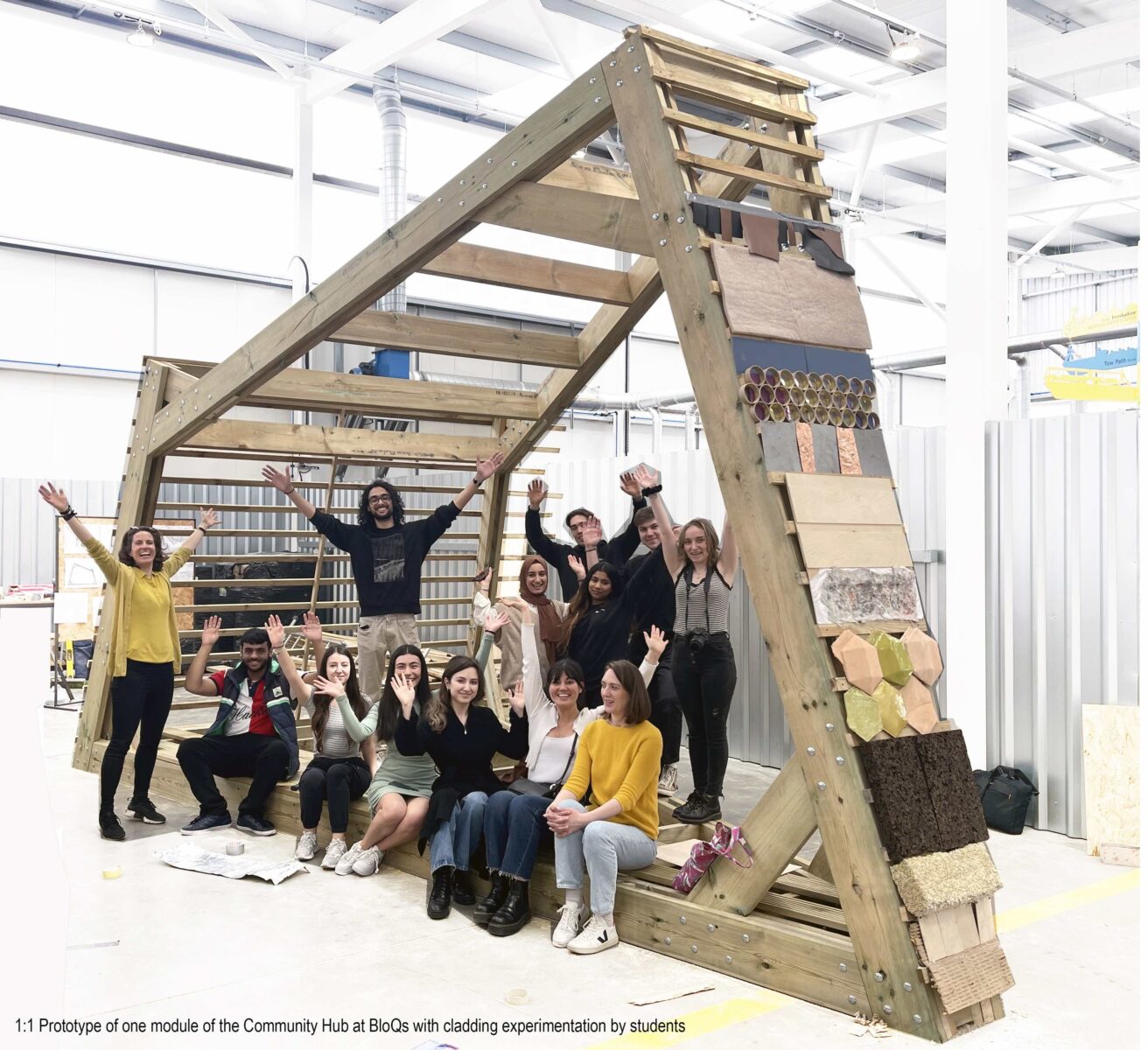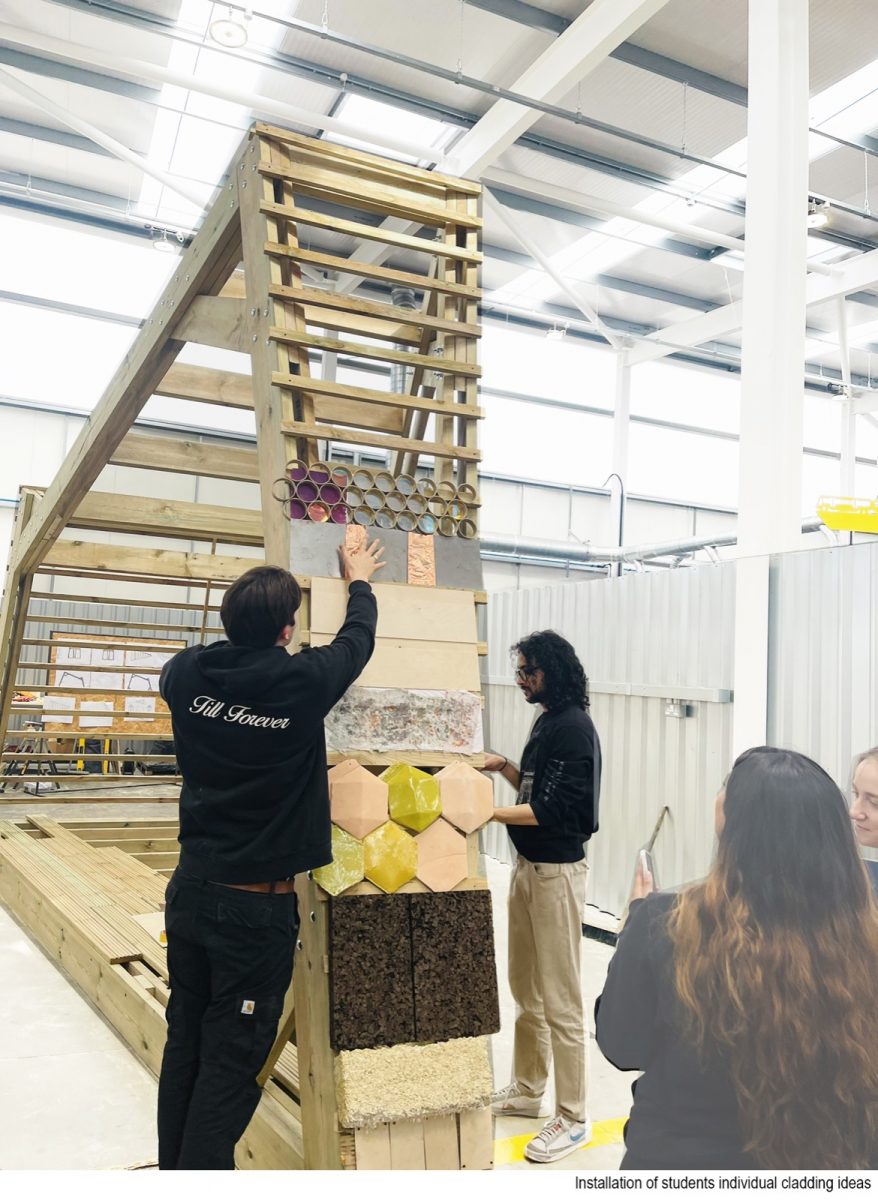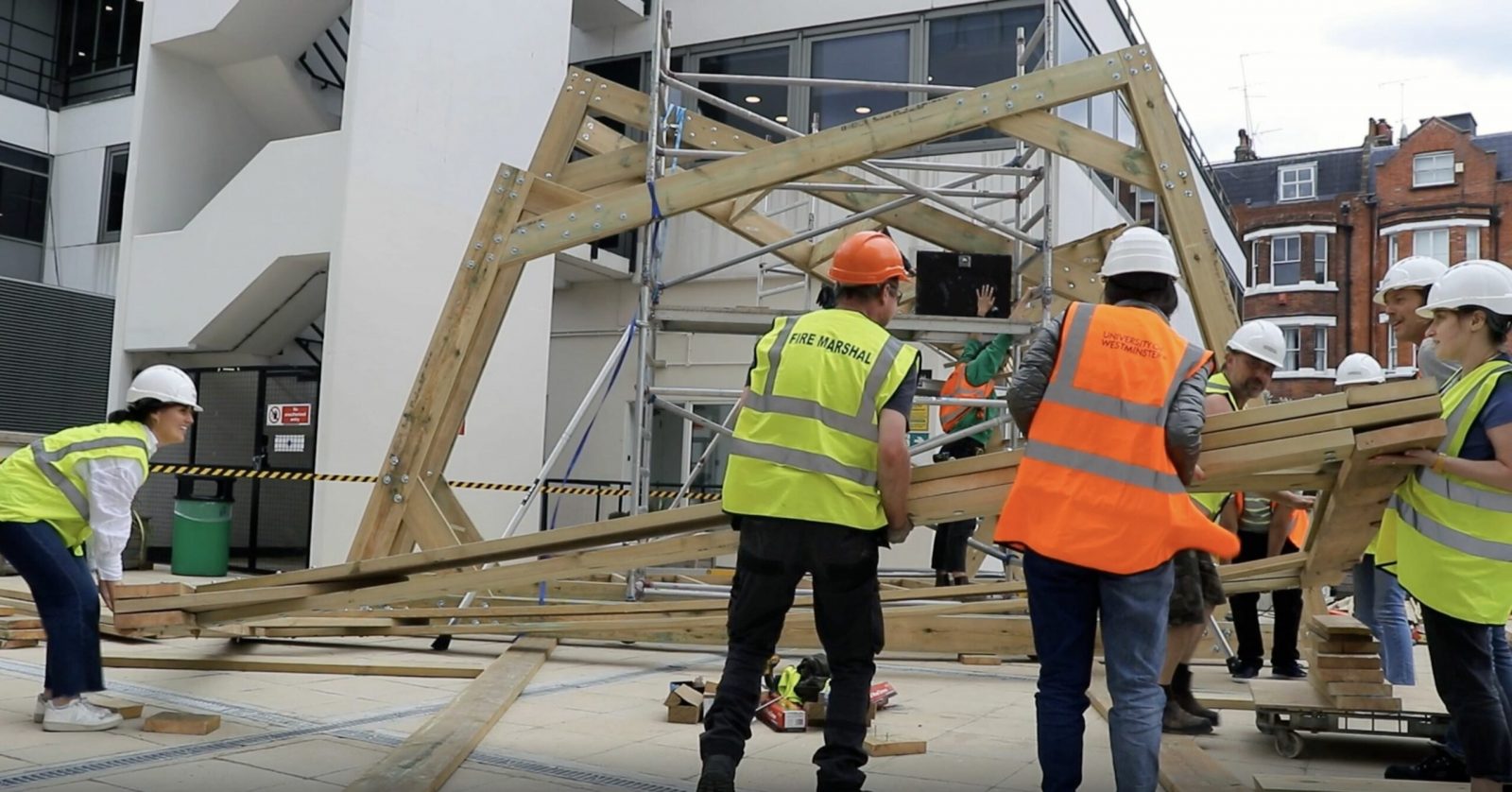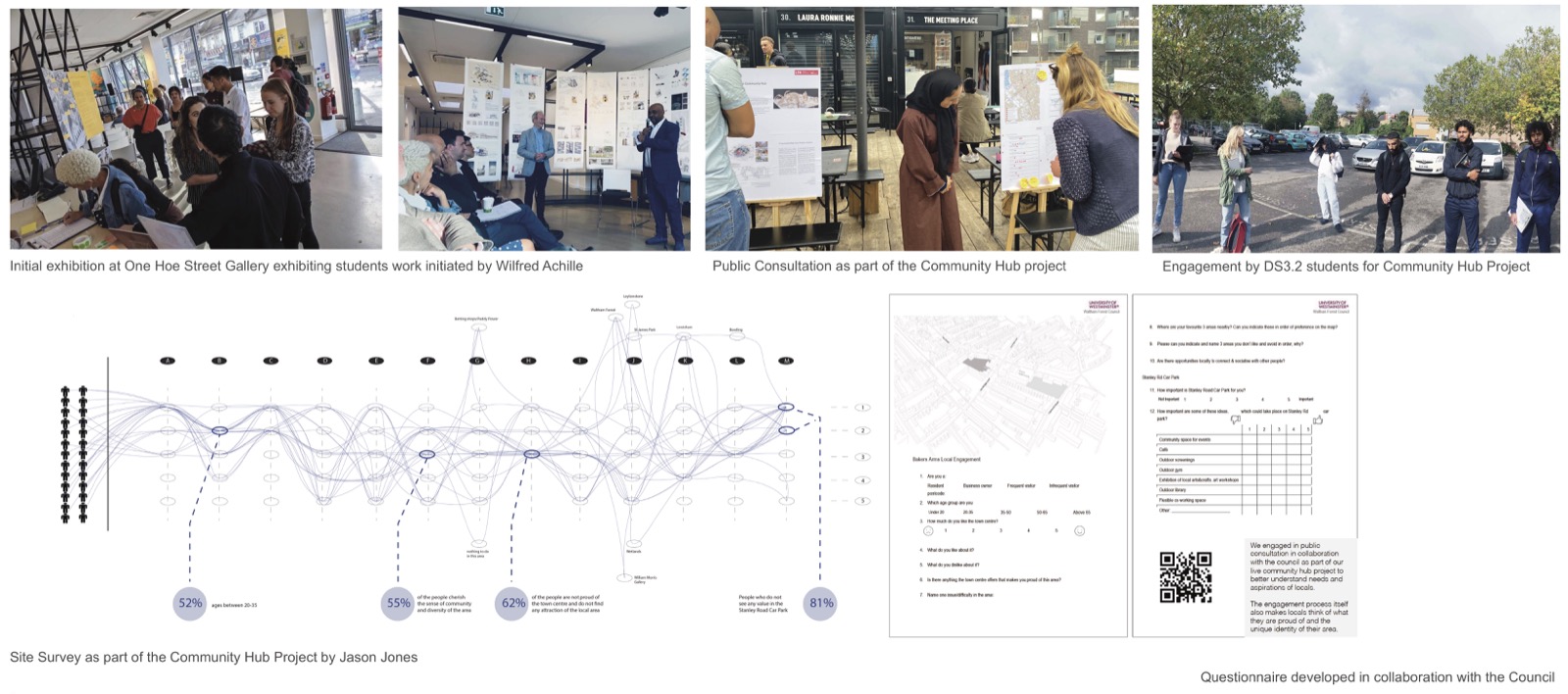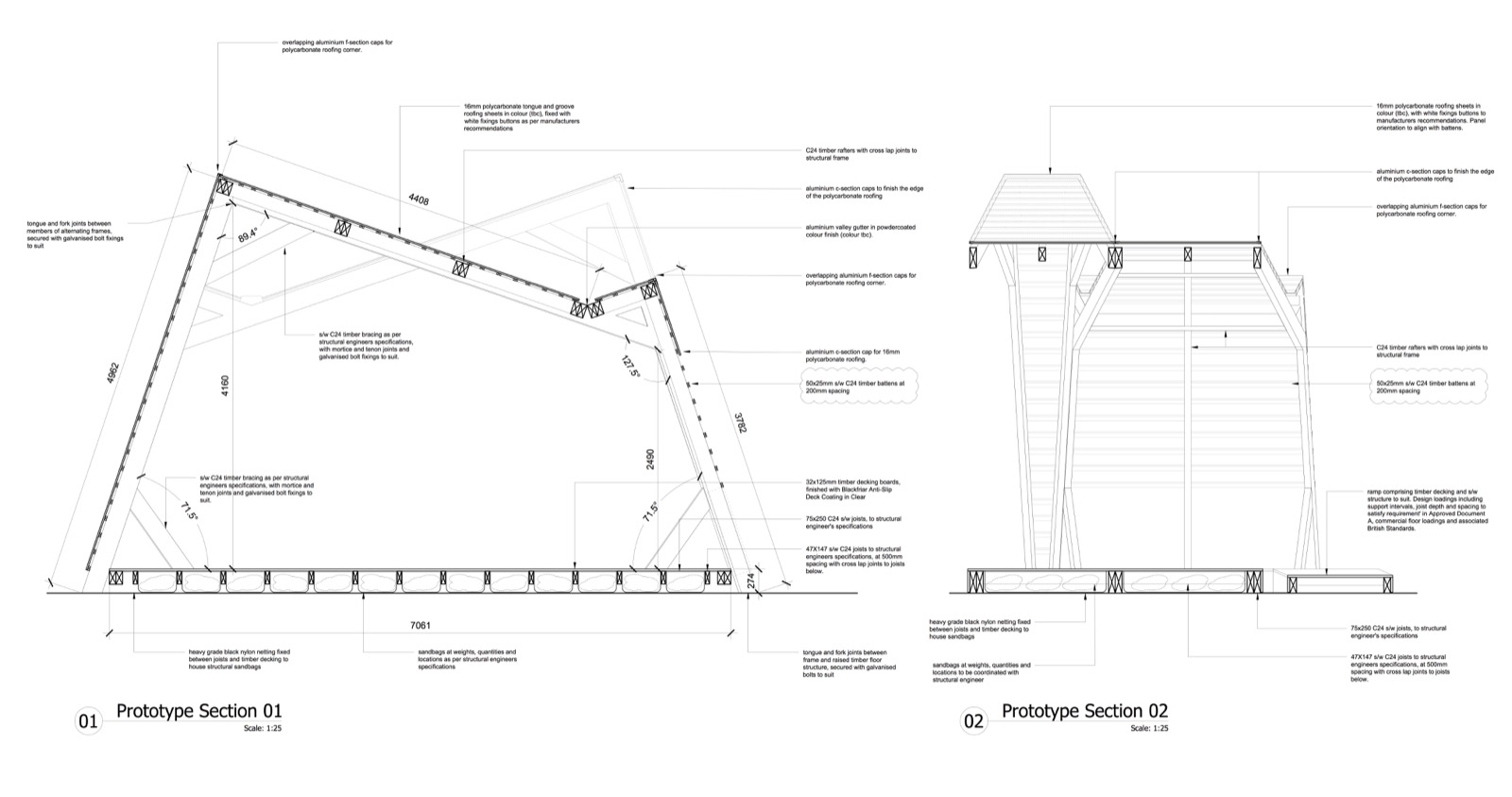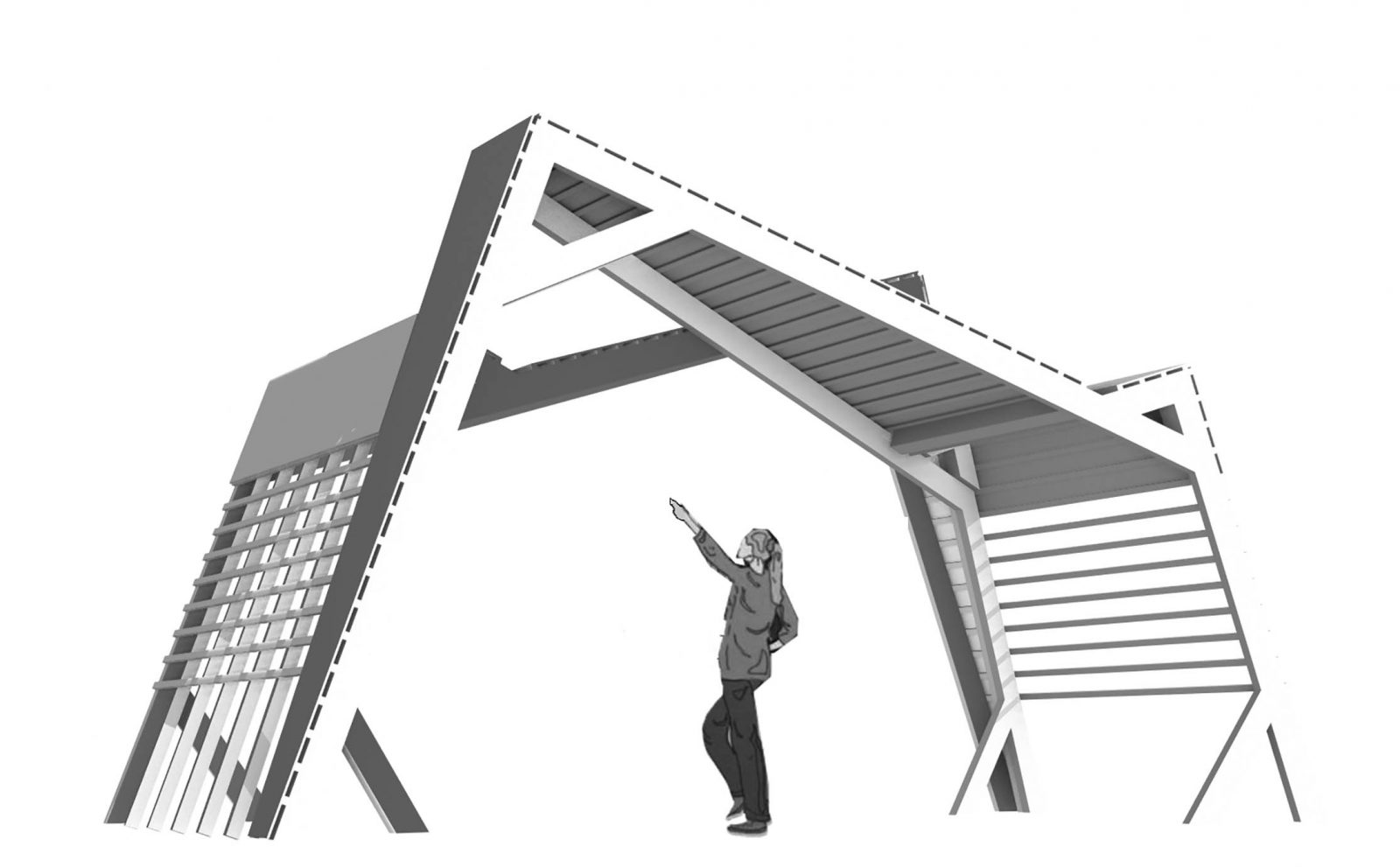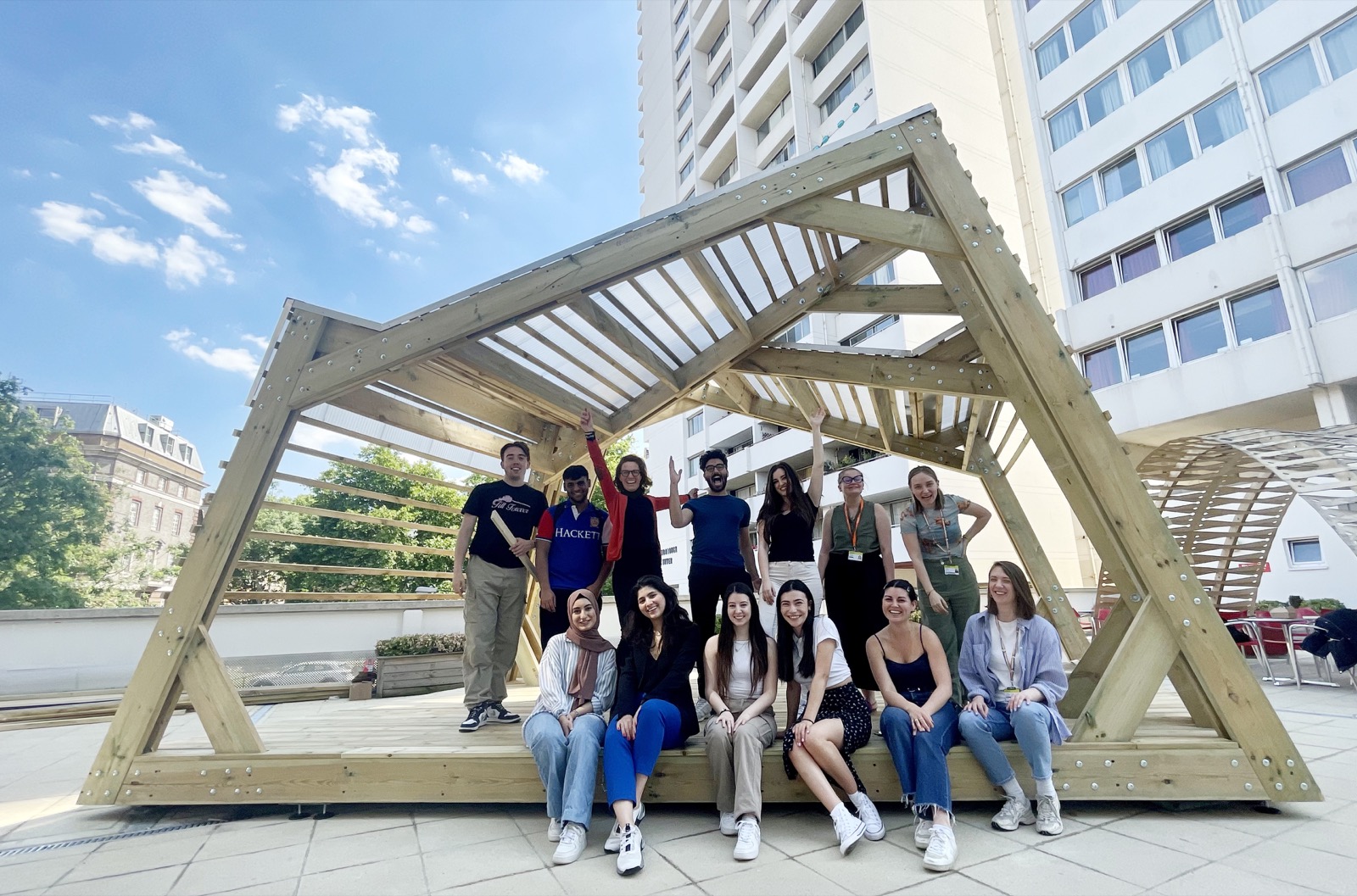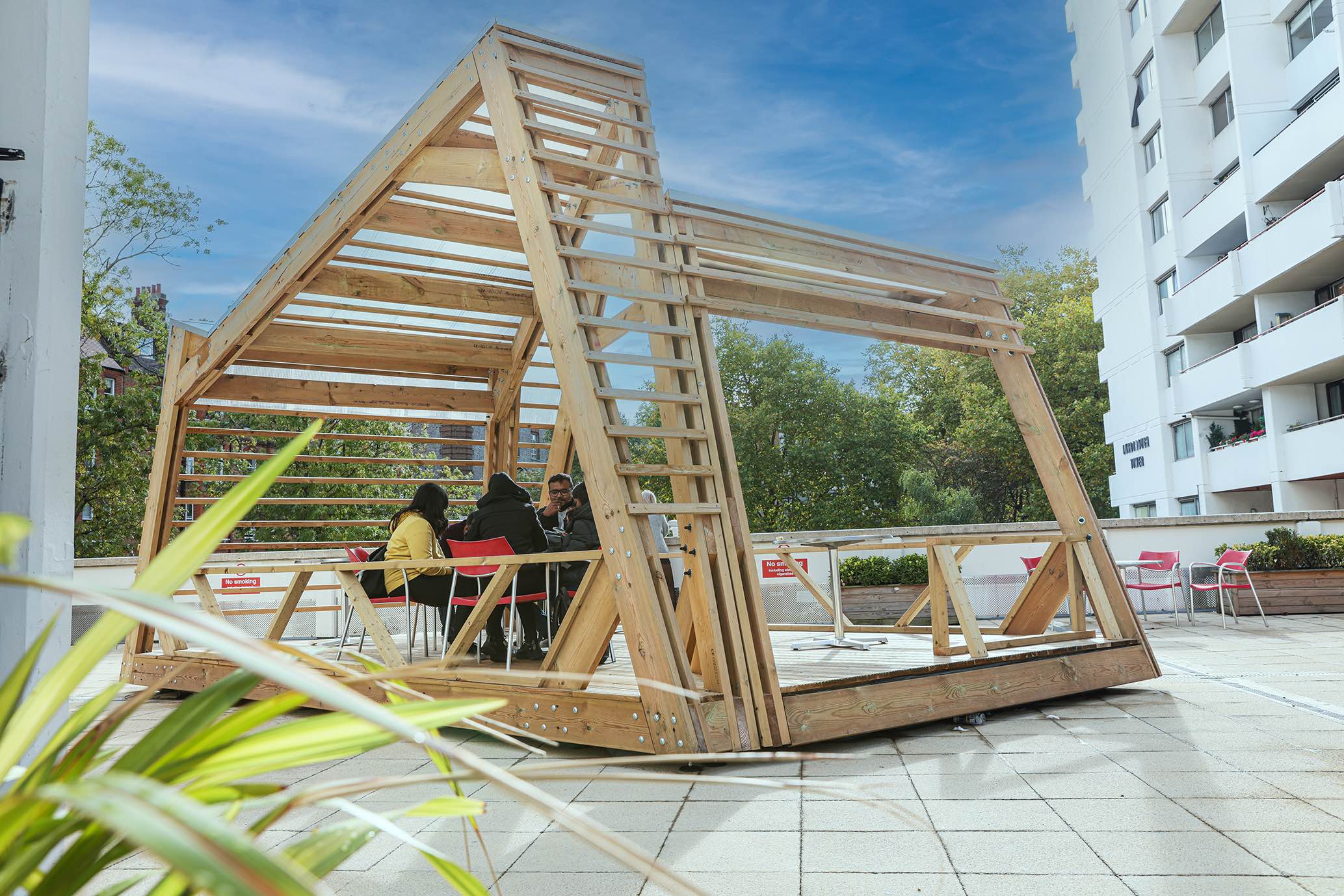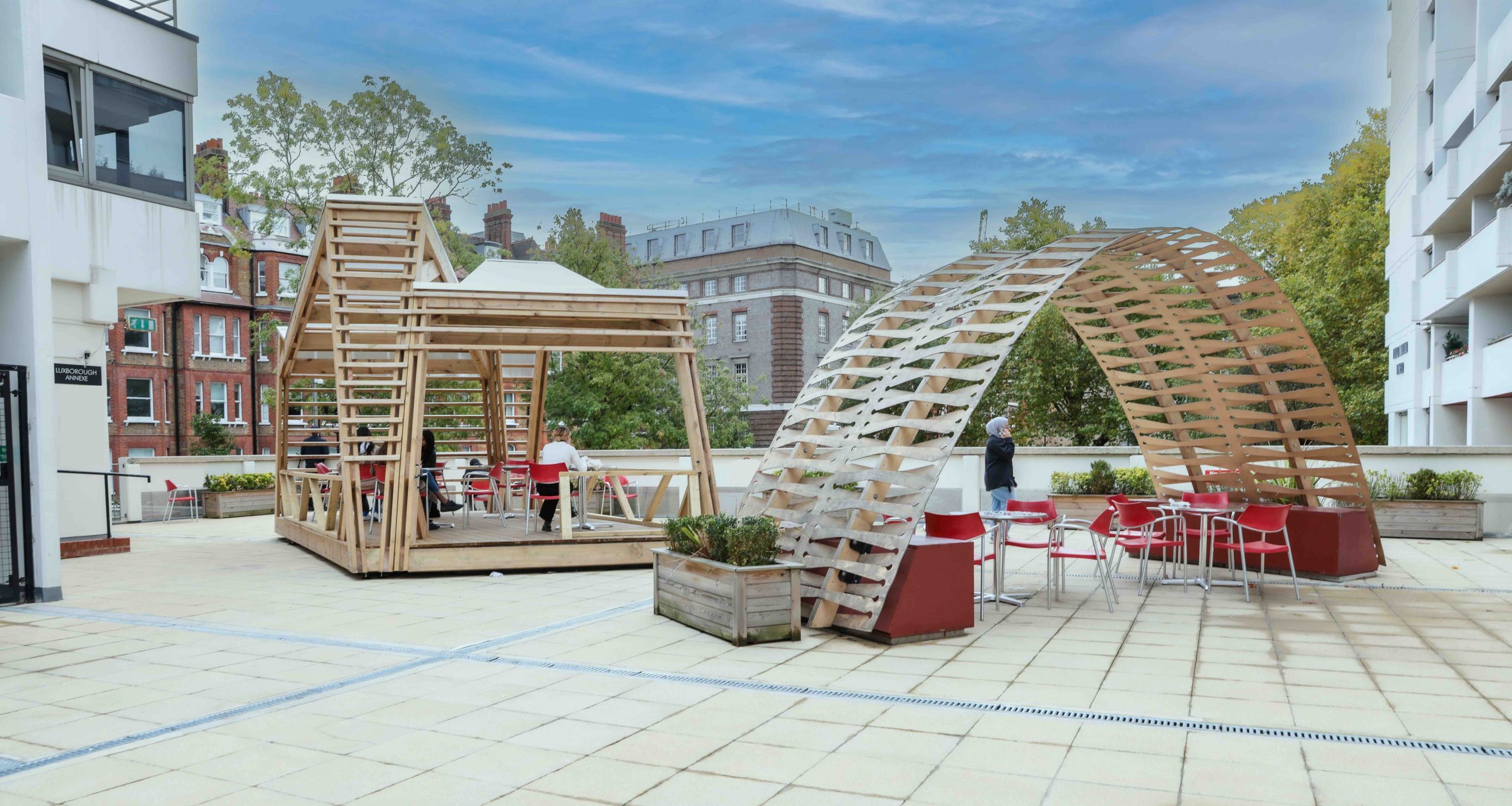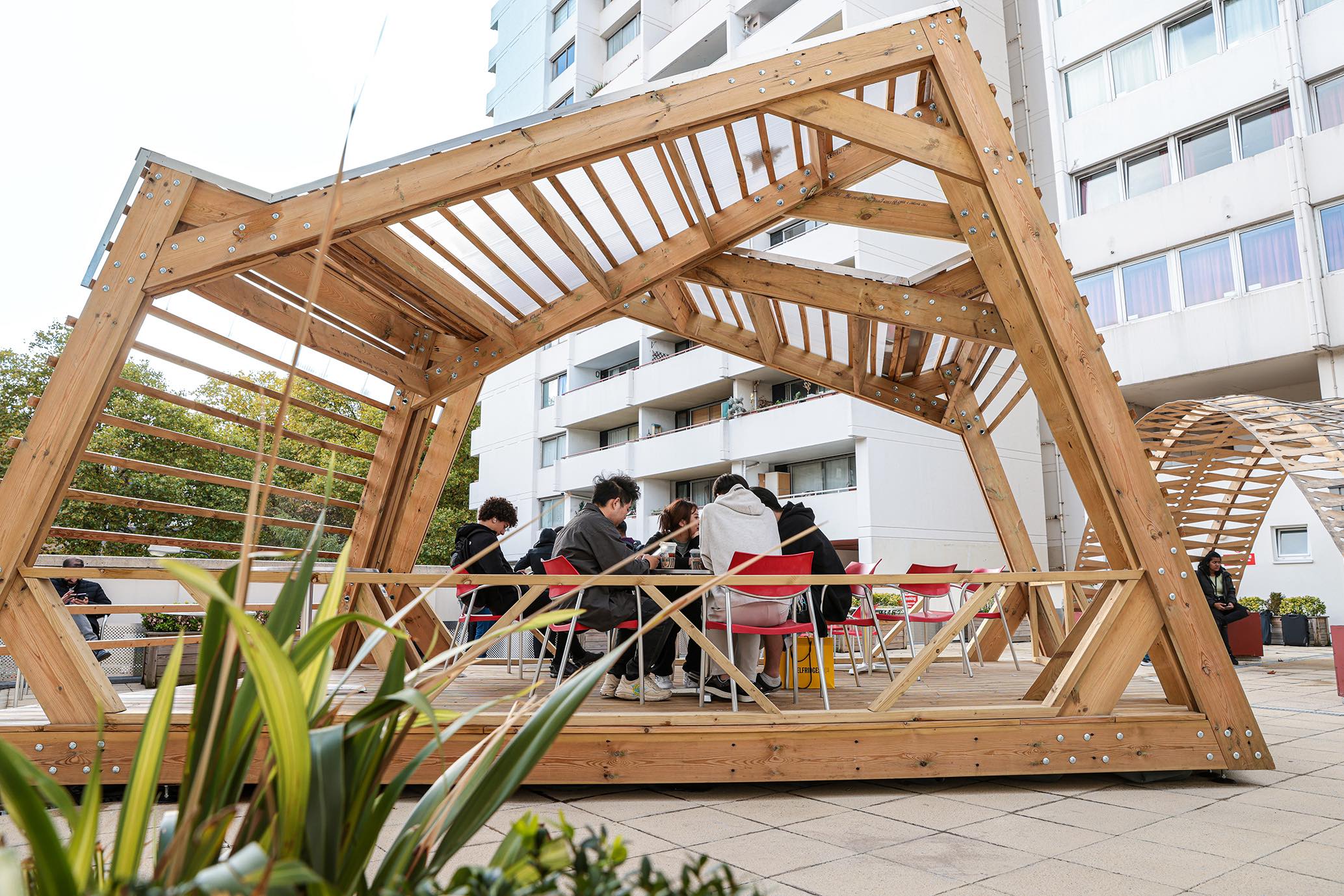Pavilion Prototype Beyond Studio
Staff and students from the University of Westminster have explored a funded pavilion prototype at the rear podium of our Marylebone Campus as part of the three-year QHT funded Community Hub Live Project.
Students gained direct, hands-on experience of the planning and construction process, enhancing and broadening their range of skills, and developing their confidence through dealing with stakeholders and construction professionals.
The 1:1 prototype is based on a triangular modular system and two alternating modules have been built with students’ help in collaboration with Mervyn Rodrigues Associates, Jan Kattein Architects and BloQs. The prototype includes a lightweight translucent polycarbonate roof to protect from rain and will be used to experiment innovative cladding solutions including ideas of upcycling and developing co-creation methodologies with the local community.
This Project derives from the previous 1:1 pavilions students built, that now have a permanent home at our Harrow Campus. Live projects involve participatory activities that can bring together diverse stakeholders. Significantly, the projects have a tangible physical aspect, which makes participation exciting, engaging and most importantly, empowering. Our innovative approach is to use Live Projects as a way to understand issues and ask questions. We introduce new ways of working collaboratively across sectors and take our multidisciplinary skills within academia and use these in live projects to serve communities and have a positive impact on society whilst introducing students and staff to alternative practice.
Live projects provide a deeper understanding of the complex relationships between spatial, political, financial and social factors in connection with our lived urban experience. There is the possibility for practical and tangible outcomes, which can be communicated to a wide range of audiences in an engaging way. Live Projects promote an understanding of complex relationships of stakeholders and introduce novel ways of practice whilst being useful, applied and with specific project outcomes.
Tutors: Maria Kramer and Bruce Irwin
Students:
- Omar Abu Wishah
- Fatima Al-Gersani
- Arjun Bansal
- Julia Brodziska
- Evangelos Christou
- Meryem Geldiyeva
- Valentina Gonzalez-Castaneda
- Raluca Hamza
- Christy Prothero
- Alex Marton
- Jessica Morrison
- Andrea-Laura Petrescu
- George Sorapure
- Sofija Stupar
- Berlin Tas
- Hasniha Thanganathan
- Laura Vasile
- Rebecca Weller
- Hamza Khan










